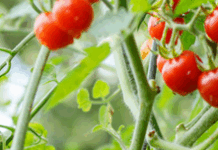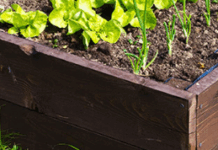Just when you think winter will never end, minor bulbs burst with color and hope, said University of Missouri Extension horticulturist David Trinklein.
Minor bulbs, such as crocuses and snowdrops, are the first harbingers of spring. Their small flowers give us a sneak preview of what is to come and whet our appetites for showier tulips, narcissus and hyacinths, said Trinklein.
“Minor bulbs signal we made it through another winter,” he said.
Minor bulbs do not provide the big splash of color that the flowers that follow them have. However, they have their own charm. Many are blue, a rare color in flowers. They naturalize well in Missouri. This simply means that, given good growing conditions, they come back year after year. They are relatively inexpensive and are available at many retail outlets, including garden centers and big-box stores.
For showy color, plant bulbs en masse, in groups of 10 or 12, says Trinklein. Plant in drifts, or groups of 50 or more, to pack a powerful punch of color. Space about 3 inches apart. Plant at a depth of about three times the bulb’s height.
Plant in loose, well-drained soil to which organic matter has been incorporated. Good soil drainage is extremely important for success with any flowering bulb, Trinklein emphasized. For this reason, bulbs do well in rock gardens and on raised mounds that tend to drain well. Avoid planting on the north side of your house or other areas with poor light.
Crocus is the best-known minor bulb. Its cup-shaped, solitary salver-form flowers taper off into a narrow tube. They are available in a variety of colors, including yellow, white, mauve and lilac. Hybrids with striped petals add variety. Crocuses grow 4-5 inches tall and flower in late winter.
Siberian squill bears small spikes of drooping, bright blue flowers. Native to woodland areas, it prefers a sunny setting but tolerates partial shade. Its strap-like leaves are about one-half inch wide and grow to about 6 inches tall.
Glory-of-the-snow is another spring favorite. Their small flowers are blue with centers that blend to pale blue or white. The central stamens are yellow. Their ribbon-like leaves grow to 6 inches in length. They naturalize well and make a spectacular display when planted en masse.
Snowdrop is among the earliest flowers to announce spring’s arrival. Its white flowers droop from the flower stem held slightly above the foliage. They bear a green crescent at the tip.
Grape hyacinths bear blue flowers that resemble small urns. They are densely attached to flower stalks 6-9 inches tall. Grape hyacinths do well in full sun or partial shade. “Seas of grape hyacinths, combined with yellow cultivars of larger Dutch bulbs such as narcissus and tulip, are spectacular to view,” Trinklein said.
Netted (Dutch) iris is a dwarf iris that forms true bulbs. Its flower is typical of any iris and consists of three inner and three outer segments. They rarely grow more than 10 inches tall. Flowers appear in late February or early March. They make an excellent choice for sunny borders or along bodies of water, said Trinklein.
Winter aconite probably is the least known of the minor bulbs. It produces yellow, buttercup-like flowers on stalks 3-4 inches in height. A collar of leaf-like bracts subtends each flower. Flowers appear in late winter and early spring, thus rivaling crocus as a harbinger of spring. Leaves emerge only after flowering has concluded. Winter aconite flourishes in full sun or partial shade and naturalizes well in the Midwest.
For more information, the Missouri Environment and Garden article “Minor Bulbs for Early Spring Color” is available at ipm.missouri.edu/meg/?ID=144.
A variety of downloadable guides on flowers and houseplants are available from MU Extension at extension.missouri.edu/flowers. Photo credit – PRO




